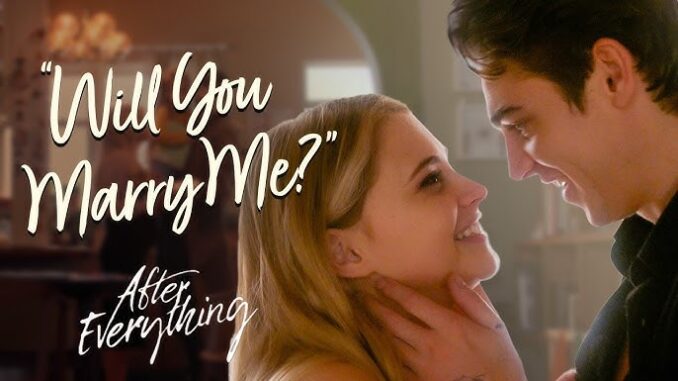
The Lingering Echo: Are Hardin and Tessa Together in the Finale of “After”?
The “After” series, a saga of tumultuous passion and perpetual conflict, leaves its audience with a question that burns hotter than Hardin Scott’s initial rage: after all the betrayals, the heartbreak, and the seemingly endless cycles of push and pull, are Hardin and Tessa finally together in the film “After Everything”? The answer, like the series itself, is layered, complex, and ultimately, somewhat unsatisfying. While the finale aims for a sense of closure, the truth about Hardin and Tessa’s future remains shrouded in a deliberate ambiguity, leaving the audience to interpret the lingering echoes of their relationship.
Throughout the series, Hardin and Tessa’s connection has been defined by its volatile nature. Their love, a whirlwind romance born from a bet and fueled by raw attraction, quickly spiraled into a chaotic dance of jealousy, insecurity, and broken trust. Hardin’s destructive tendencies, rooted in his own trauma, clashed with Tessa’s desire for stability and genuine affection. This push and pull, the very foundation of their drama, is what captivated audiences, yet it also led to the series’ most criticized aspect: its repetitive and often toxic portrayal of love.
“After Everything” attempts to break free from this cycle. Hardin, finally confronting the demons of his past, embarks on a journey of self-discovery. He seeks therapy, confronts his father, and grapples with the immense guilt and regret stemming from his past actions. This newfound introspection allows him to finally acknowledge the pain he inflicted on Tessa and to actively work towards becoming a better man.
The film shows Hardin dedicating himself to his writing, pouring his heart and soul into crafting a novel centered on his and Tessa’s tumultuous relationship. This act of artistic expression, he hopes, will not only help him process his own experiences but also serve as a testament to his love and a plea for forgiveness. He sends the manuscript to Tessa, a vulnerable gesture that reveals the depth of his commitment to change.
Tessa, on the other hand, has moved on, or at least, she is trying to. She’s pursuing her career, establishing a life independent of Hardin, and seemingly content in her newfound independence. The arrival of Hardin’s manuscript throws her world into disarray. It forces her to confront the lingering emotions she harbors, the undeniable pull that still exists between them, and the inherent risk of opening herself up to potential heartbreak once again.
The film culminates in a poignant, yet ambiguous, encounter between Hardin and Tessa. They meet, years after their initial separation, in a bookstore. The air crackles with unspoken emotions. They talk, tentatively at first, about their past, their regrets, and their hopes for the future. The scene is filled with a palpable sense of longing and a fragile understanding that transcends their past mistakes.
However, the scene deliberately avoids a definitive answer. There is no grand romantic gesture, no tearful reunion, and no explicit declaration of their rekindled love. Instead, the film ends with a quiet moment of understanding, a shared look that suggests a possibility, a potential path forward. They acknowledge the pain they caused each other and the arduous journey they both have undertaken to heal. The final shot lingers on their faces, leaving the audience to speculate on what the future holds for them.
Ultimately, “After Everything” doesn’t offer a clear-cut resolution to Hardin and Tessa’s story. It suggests that they have both grown, learned from their mistakes, and developed a deeper understanding of themselves and each other. It hints at the possibility of a future together, but it leaves the ultimate decision to the audience. Are they truly back together? The answer lies in the interpretation of their unspoken communication, the lingering echoes of their past, and the potential for a future built on mutual respect and forgiveness.
The ambiguity of the ending is, perhaps, the most honest representation of the complexities of love and relationships. It acknowledges that forgiveness is not a guarantee of reconciliation and that even after immense growth and self-improvement, the scars of the past can still linger. “After Everything” doesn’t offer a fairytale ending, but it presents a more realistic and nuanced portrayal of two individuals grappling with the complexities of love, loss, and the enduring power of connection, even in the face of seemingly insurmountable obstacles. The truth in the finale lies not in a definitive answer, but in the acknowledgment that the journey of love, like life itself, is rarely ever truly over, but rather, a continuous unfolding of possibilities.
